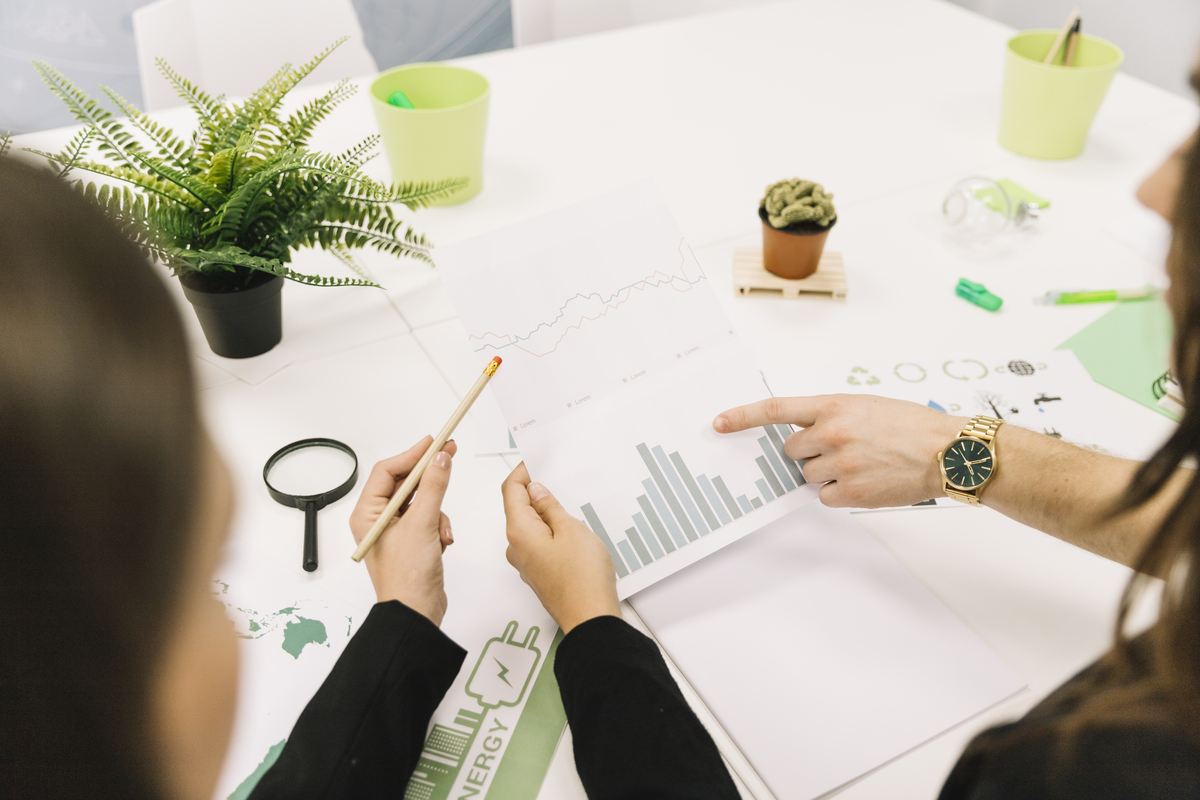A valuable instrument for promoting the ideas of a circular economy in construction is the Life Cycle Assessment (LCA), which allows businesses to assess the environmental effects of their products at every stage of their life cycle, from the extraction of raw materials to production, distribution, use, and recycling or disposal at the end of the product’s useful life.
As global concerns like resource shortages and climate change worsen, sustainable construction technology must incorporate LCA in circular economy plans. Research shows that LCA in construction can result in large reductions in greenhouse gas emissions; by streamlining their operations, some businesses have been able to achieve savings of up to 30%. This article examines five revolutionary effects of LCA in the circular economy, highlighting the latter’s vital role in advancing sustainable practices and conscientious resource management.
Table of Contents
Understanding LCA in the Circular Economy
Here is a definition of LCA in the circular economy:
What is Life Cycle Assessment (LCA)?
A methodical technique called life cycle assessment (LCA) is used to assess the environmental effects connected to each stage of a product’s life cycle. Usually, the procedure is divided into four basic stages:
- Inventory Analysis: Information is gathered on the product’s inputs (raw materials, energy) and outputs (waste, emissions).
- Objective and Range Definition: During this phase, the assessment’s goals are established, along with the boundaries of the system and the functional unit.
- Interpretation: The last stage entails reviewing the data and offering useful advice to help with decision-making.
- Impact Assessment: This stage assesses the possible effects on the environment based on the information obtained, frequently employing particular indicators such as the potential for global warming or water use.

What is a Circular Economy?
An alternative economic model known as the “Circular economy” places a higher priority on waste reduction, resource efficiency, and sustainability. In contrast to the take-make-dispose paradigm of the conventional linear economy, a circular economy emphasizes prolonging product lifecycles, encouraging reuse, and guaranteeing that resources stay in circulation. Important ideas consist of:
- Design for Longevity: To ensure that products survive longer, they are made with durability and repairability in mind.
- Resource Efficiency: Refers to maximizing a resource’s usefulness and reducing its negative effects on the environment across the whole life cycle of a product.
- Emphasis on Recycling: Encouraging the recycling of materials to decrease waste and reduce the demand for new resource extraction.
Benefits and Challenges of LCA in the Circular Economy
Benefits:
- Environmental Impact Reduction: By identifying areas for improvement, life cycle assessment (LCA) contributes to a significant decrease in resource consumption and greenhouse gas emissions.
- Improved Brand Reputation: Companies that use circular economy and life cycle assessment (LCA) principles frequently attract eco-aware customers by improving their brand image.
- Cost Savings: Several studies have shown that businesses can save a significant amount of money by maximizing resource utilization and reducing waste.
Challenges:
- Data Availability: Comprehensive data, which are necessary for conducting a life cycle assessment (LCA), may not always be easily obtainable or may differ considerably throughout sources.
- Standardization Issues: Lack of defined techniques for doing LCA might cause to variations in results, making comparisons problematic.
- Complexity: Especially for businesses without prior experience or expertise, the Life Cycle Assessment (LCA) procedure can be intricate and time-consuming.
Suggested article to read: Top 7 Reusable Materials in Construction; 2024 Review

Transformative Impacts of LCA in the Circular Economy
1. Improving the Design of the Product
By identifying materials and activities that have substantial environmental implications, life cycle assessment (LCA) plays a critical role in optimizing product design. For example, IKEA chooses recyclable materials and reduces resource use while designing sustainable furniture using life cycle assessment (LCA). This strategy not only lessens ecological footprints but also appeals to customers who care about the environment.
2. Increasing Awareness Among Customers
LCA can assist in informing customers about how their purchases affect the environment. Companies can enable consumers to make more sustainable decisions by being upfront about product life cycles. The Carbon Trust, for instance, provides carbon labeling to companies so they can tell customers about the carbon footprints of their goods. Research suggests that over 70% of consumers are willing to pay a premium for sustainable products, showing the market demand for transparency.
3. Encouraging Eco-Friendly Supply Chains
Lean Life Assessment (LCA) promotes accountability and openness in supply chains by evaluating the environmental effects of individual components. To make sure that raw materials are supplied ethically and sustainably, organizations such as Unilever, for instance, use life cycle assessment (LCA) to assess the sustainability of its suppliers. In addition to improving brand reputation, this lowers the risk of supply chain interruptions.
4. Motivating the Development of Policies
More and more governments and regulatory agencies are realizing how crucial Life Cycle Assessment (LCA) is to developing environmental laws and standards. LCA helps policies that encourage sustainable practices to be developed by offering solid data on environmental implications. The European Union, for example, has included life cycle assessment (LCA) into the framework of the Green Deal with the goal of achieving climate neutrality by 2050 through sustainable economic practices.
5. Promoting Improved Decision-Making
Organizations may make well-informed decisions about sustainability strategies and resource management by incorporating life cycle assessment (LCA) into their operations. According to a research by the Ellen MacArthur Foundation, companies that use life cycle assessment (LCA) can save resource costs by as much as 20%, increasing the profitability of their operations and promoting the ideas of the circular economy.

LCA and Circular Economy Future Trends
In the fields of life cycle assessment (LCA) and circular economy, a number of themes are emerging as the globe continues to move toward sustainable practices:
- Integration with Other Tools: To maximize its usefulness, life cycle assessment (LCA) is becoming more and more integrated with other sustainability assessment tools, like carbon footprint calculators and environmental management systems (EMS).
- Digitalization: By employing cutting-edge technology like big data analytics and AI in construction, the Life Cycle Assessment (LCA) process is becoming more efficient and precise.
- Customer Engagement: As customer knowledge grows, businesses will be compelled to embrace more open procedures, with life cycle assessment (LCA) serving as a vital instrument for communication.
- Policy Frameworks: In order to promote sustainable economic growth, governments will probably keep creating policy frameworks that back LCA and circular economy practices.
Conclusion
In conclusion, LCA in the circular economy offers transformative impacts that are essential for achieving sustainability. LCA enables businesses to lessen their environmental impact and promote resource management by improving product design, supporting sustainable supply chains, accelerating policy development, and increasing customer awareness.
Even if there are still issues with standardization and data availability, the use of LCA in the circular economy appears to have a bright future ahead of it, as new developments are expected to increase its efficacy. The integration of Life Cycle Assessment (LCA) is expected to play a pivotal role in fostering a more sustainable and circular economy, given the growing recognition of sustainability by businesses and regulators.
FAQs
What does LCA in the Circular Economy Mean?
- Answer: Within the context of the circular economy, Life Cycle Assessment, or LCA, refers to a methodical process for assessing how a product will affect the environment at each stage of its life cycle, from the extraction of raw materials to disposal. This strategy is crucial for encouraging environmentally friendly behaviors and helping to improve product development decision-making.
How does LCA Enhance Product Design?
- Answer: How is product design improved by LCA? Through Life Cycle Assessment (LCA), organizations can create goods with reduced environmental footprints by identifying the materials and activities that have the greatest environmental impact. This can entail making better use of energy, streamlining production procedures, and using sustainable materials—all of which lead to more environmentally friendly product designs.
What are the Benefits of Using LCA in Businesses?
- Answer: Reducing environmental impacts can result in cost savings through resource efficiency; demonstrating a company’s commitment to sustainability can improve brand perception; and supporting sustainable supplier chains are just a few advantages of implementing Life Cycle Assessment (LCA) in business. LCA also assists companies in fulfilling legal obligations and customer requests for openness.
What Challenges does LCA Face in Implementation?
- Answer: What obstacles does LCA have to overcome to be implemented? Notwithstanding its advantages, LCA has drawbacks, including the difficulty in obtaining trustworthy data, the intricacy of the evaluation procedure, and the absence of defined techniques. These obstacles may prevent widespread adoption and make it more difficult for businesses to successfully apply LCA.
What are the Future Trends for LCA in the Circular Economy?
- Answer: Increased digitalization, which will simplify data collecting and analysis, the integration of LCA with other sustainability tools for a more holistic approach, and an increase in consumer engagement and sustainability awareness are some of the future trends for LCA in the circular economy. The promotion of sustainable practices across a range of industries depends on these developments.
Suggested article for reading:
Revolutionizing Construction: An Introduction to AI in Construction (2024)
The Role of PIM in Sustainable Construction (2024)
IIoT Technology: Top 7 Sustainable Practices It Enables
Top 23 Famous Women Architects in World; 2024 Review
The Role of Digital Transformation in Sustainable Future; 2024 Review
Sustainable Construction Technology; Ultimate Guide in 2024
Resources:
McKinsey & Company | European Commission | Carbon Trust
Books and Articles:
Ellen MacArthur Foundation. (2019). Completing the Picture: How the Circular Economy Tackles Climate Change.
International Organization for Standardization (ISO). (2020). ISO 14040:2006 – Environmental management – Life cycle assessment – Principles and framework.
For all the pictures: Freepik





